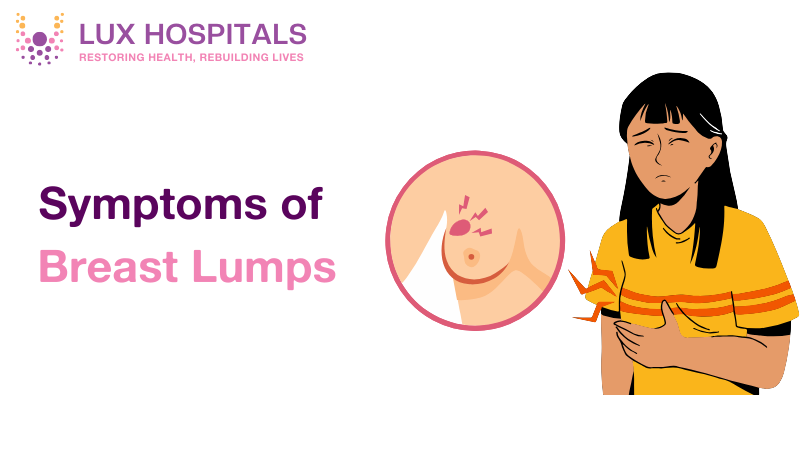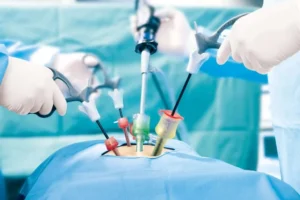Signs and Symptoms of Breast Lumps: What to Look for in Your Self-Exams

Regular self-examinations of your breasts are crucial in detecting any unusual changes, including lumps. Understanding the symptoms of breast lumps can help with early detection and timely medical intervention. While most lumps are benign, some may indicate underlying health issues that require further evaluation.
In this article, we’ll explore the common symptoms, potential causes, and available treatment options, including breast lump removal procedures.
Understanding Symptoms of Breast Lumps
Breast lumps can vary in size, shape, and texture. Some may be painless, while others cause discomfort. Here are some key symptoms of a breast lump you should watch for during self-exams:
- A distinct lump or thickened area: The most noticeable sign is a firm, distinct mass in the breast or underarm.
- Change in breast size or shape: One breast may appear larger or misshapen compared to the other.
- Skin changes: Dimpling, redness, or an “orange peel” texture could indicate underlying concerns.
- Pain or tenderness: While most lumps are painless, some can cause discomfort, especially before menstruation.
- Nipple changes: Retraction (pulling in), discharge (especially bloody or clear fluid), or an unusual shape.
- Swelling or warmth: Inflammatory breast conditions can cause swelling and increased warmth in the affected area.
Causes of Breast Lumps
Lumps in the breast can develop due to various reasons. Some common breast lump causes include:
1. Hormonal Changes
- Many women experience lumps due to hormonal fluctuations, especially before menstruation. These are usually benign cysts or fibrocystic changes.
2. Fibroadenomas
- These are non-cancerous, solid breast lumps that typically occur in younger women. They feel smooth, rubbery, and moveable.
3. Cysts
- Fluid-filled sacs that develop in breast tissue and may feel tender, especially before menstruation.
4. Infections (Mastitis)
- Inflammation due to infection, often associated with breastfeeding, can lead to painful lumps.
5. Lipomas
- These are fatty tumors that grow slowly and are generally harmless.
6. Breast Cancer
- While most lumps are benign, some may indicate breast cancer. Malignant lumps often feel hard, irregular in shape, and fixed in place.
When to See a Doctor
While not all lumps are a cause for concern, you should consult a doctor if:
- The lump persists for more than a few weeks.
- It feels hard, irregular, or fixed.
- You notice nipple discharge, especially if bloody.
- There are noticeable skin changes or persistent pain.
A doctor may recommend diagnostic tests such as mammograms, ultrasounds, or biopsies to determine the nature of the lump.
Breast Lump Treatment Options
Treatment depends on the cause of the lump. Below are common breast lump treatment options:
1. Monitoring (Watchful Waiting)
- If the lump appears benign, your doctor may suggest periodic monitoring.
2. Medications
- Pain relievers, antibiotics (for infections), or hormone therapy may be prescribed depending on the underlying condition.
3. Fine Needle Aspiration (FNA)
- If the lump is fluid-filled, your doctor may drain it using a fine needle.
4. Breast Lump Surgery
- If a lump is large, growing, or suspicious, breast lump surgery may be recommended. This can include a lumpectomy (removal of the lump) or a more extensive procedure.
5. Breast Lump Removal for Cancerous Lumps
- If diagnosed with breast cancer, treatment may involve surgery, radiation, chemotherapy, or targeted therapy.
How to Perform a Breast Self-Exam
Self-exams are an easy way to detect any unusual changes early. Follow these steps:
Step 1: Observe in the Mirror
- Stand with your arms at your sides and observe for any changes in size, shape, or skin texture.
Step 2: Check for Lumps While Standing
- Use your fingers to gently press around the entire breast and armpit in circular motions. Do this in different positions, such as raising one arm.
Step 3: Perform the Exam While Lying Down
- Lying flat can help spread out the breast tissue, making it easier to detect changes.
Preventing Breast Lumps and Maintaining Breast Health
While not all breast lumps can be prevented, maintaining a healthy lifestyle can reduce risks:
- Regular screenings: Annual mammograms for women over 40.
- Healthy diet: Eating a diet rich in antioxidants and healthy fats.
- Exercise: Maintaining an active lifestyle reduces the risk of breast-related issues.
- Limiting alcohol and avoiding smoking: Both are linked to an increased risk of breast conditions.
Final Thoughts
Understanding the symptoms of breast lumps and performing regular self-exams can help in early detection and prompt medical attention. If you notice any changes, consult a healthcare professional for further evaluation and appropriate breast lump treatment.
Prioritize your breast health with regular check-ups, a balanced lifestyle, and awareness of potential breast lump causes. Early detection can make a significant difference in treatment outcomes and overall well-being.
Frequently Asked Questions
A breast lump may feel hard or soft, round or irregular, movable or fixed, and can be painless or tender, depending on the cause.
Breast lumps can be caused by hormonal changes, cysts, fibroadenomas, infections, lipomas, or, in some cases, breast cancer. It is important to get any lump evaluated by a doctor.
No, most breast lumps are benign and caused by conditions like cysts, fibroadenomas, or hormonal changes. However, it is important to get any lump checked by a doctor.
A serious lump is usually hard, immovable, and has irregular edges. Other concerning symptoms include nipple discharge, skin dimpling, and persistent pain. If you notice these signs, consult a doctor immediately.
If you find a lump, monitor it for any changes over a few weeks. If it persists, grows, or causes pain, schedule an appointment with a healthcare provider for further evaluation.
Treatment depends on the cause and may include monitoring, medication, aspiration, or surgery. If the lump is cancerous, additional treatments like chemotherapy or radiation may be required.
No, breast cancer can also present as changes in breast shape, skin texture, nipple retraction, or unexplained pain. Regular screenings and self-exams help with early detection.
You should consult a gynecologist, general surgeon, or oncologist for a breast lump evaluation. At Lux Hospitals, we have the best doctors specializing in breast lump evaluation and treatment, ensuring expert care and accurate diagnosis.




















